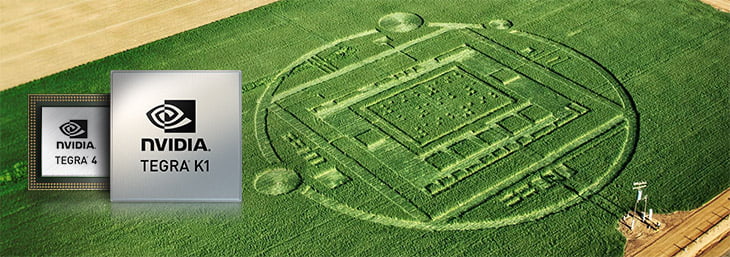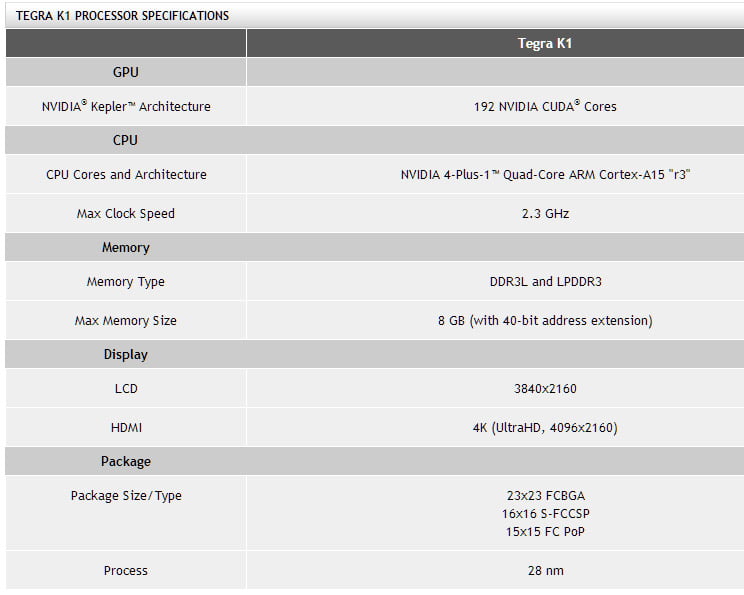Ever imagined to play those marvelous games from PS4 or Xbox One on your smartphone, now you can. Bringing in more power than the current generation gaming consoles, Nvidia has unveiled the next leap in mobile graphics Tegra K1 mobile processor – a 192-core super chip build on NVIDIA Kepler architecture that already powers the fastest GPU – NVIDIA GeForce GTX 780 Ti.
“Over the past two decades, NVIDIA invented the GPU and has developed more graphics technologies than any other company. With Tegra K1, we’re bringing that heritage to mobile. It bridges the gap for developers, who can now build next-gen games and apps that will run on any device.” said Jen-Hsun Huang, co-founder and CEO, NVIDIA during the CES 2014 event.

Nvidia’s new Tegra K1 mobile processor is offered in two pin-to-pin compatible versions. One uses a 32-bit quad-core 4-Plus-1 ARM Cortex A15 CPU and the other version uses a custom Nvidia designed 64-bit dual Super Core CPU based on ARMv8 architecture. Both versions are powered by 192-core NVIDIA Kepler GPU that offers stunning graphics and visual computing capabilities to a mobile device.
Some of the wonderful features of Tegra K1 mobile processor is that it offers full support for PC-class gaming technologies including DirectX 11, OpenGL 4.4 and tessellation. Thus enabling PC and console game developers to port their stunning games to Android. As of its acceptance Tegra K1 can run world’s most advanced game engine, Unreal Engine 4.
The new Tegra K1 supports NVIDIA CUDA the world’s most pervasive parallel computing platform through which devlopers can create cutting-edge GPU-accelerated applications for computer vision, advanced imaging, speech recognition, video editing and more. With all this power embedded in Tegra K1 is 1.5 times more efficient than other mobile GPUs.

Nvidia except vendors to manufacture devices in the 32 bit version by the first half of 2014, while the 64-bit version is expected in devices in the second half of the year.
So get ready for some awesome mobile gaming experience this 2014.


